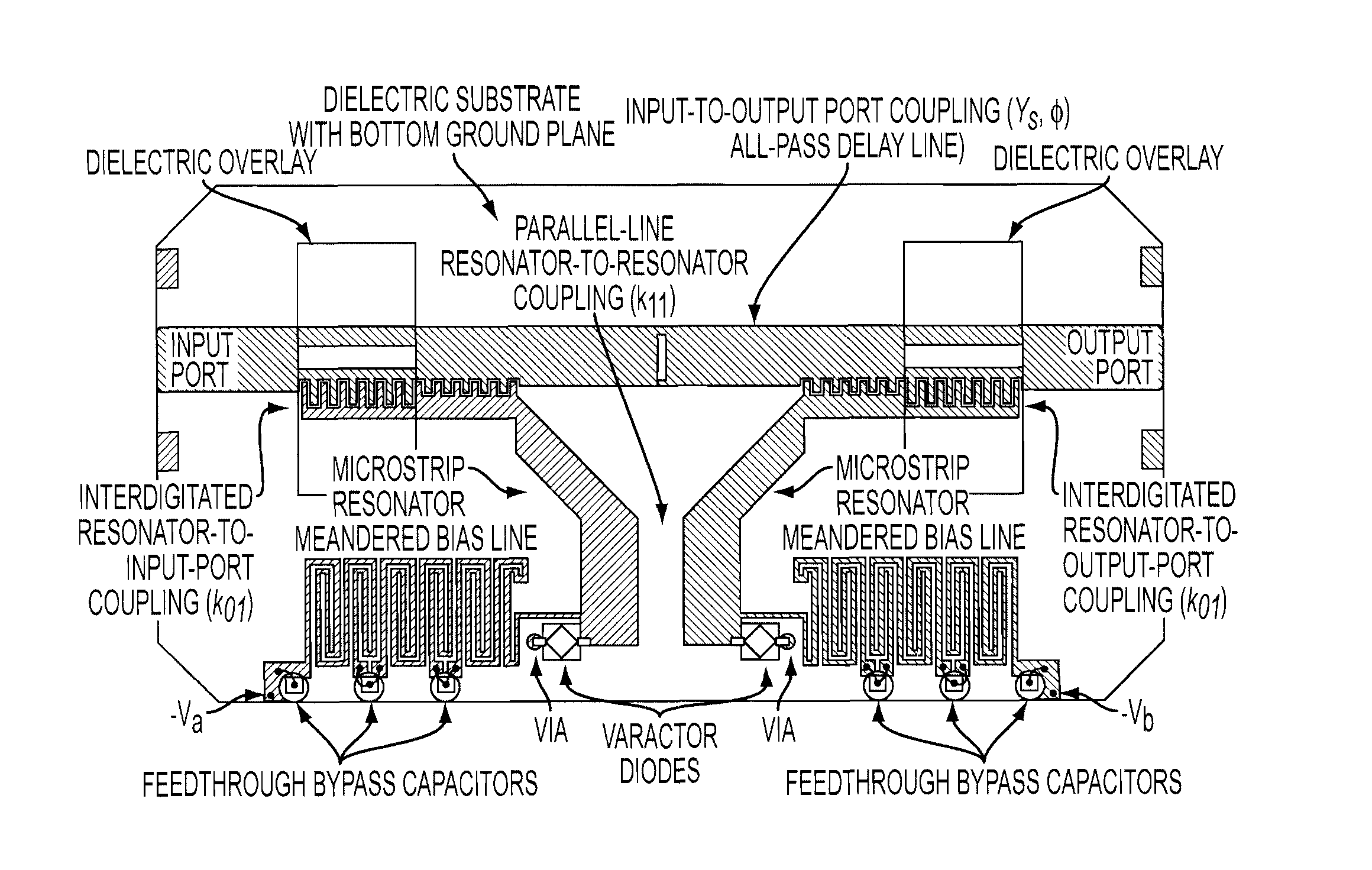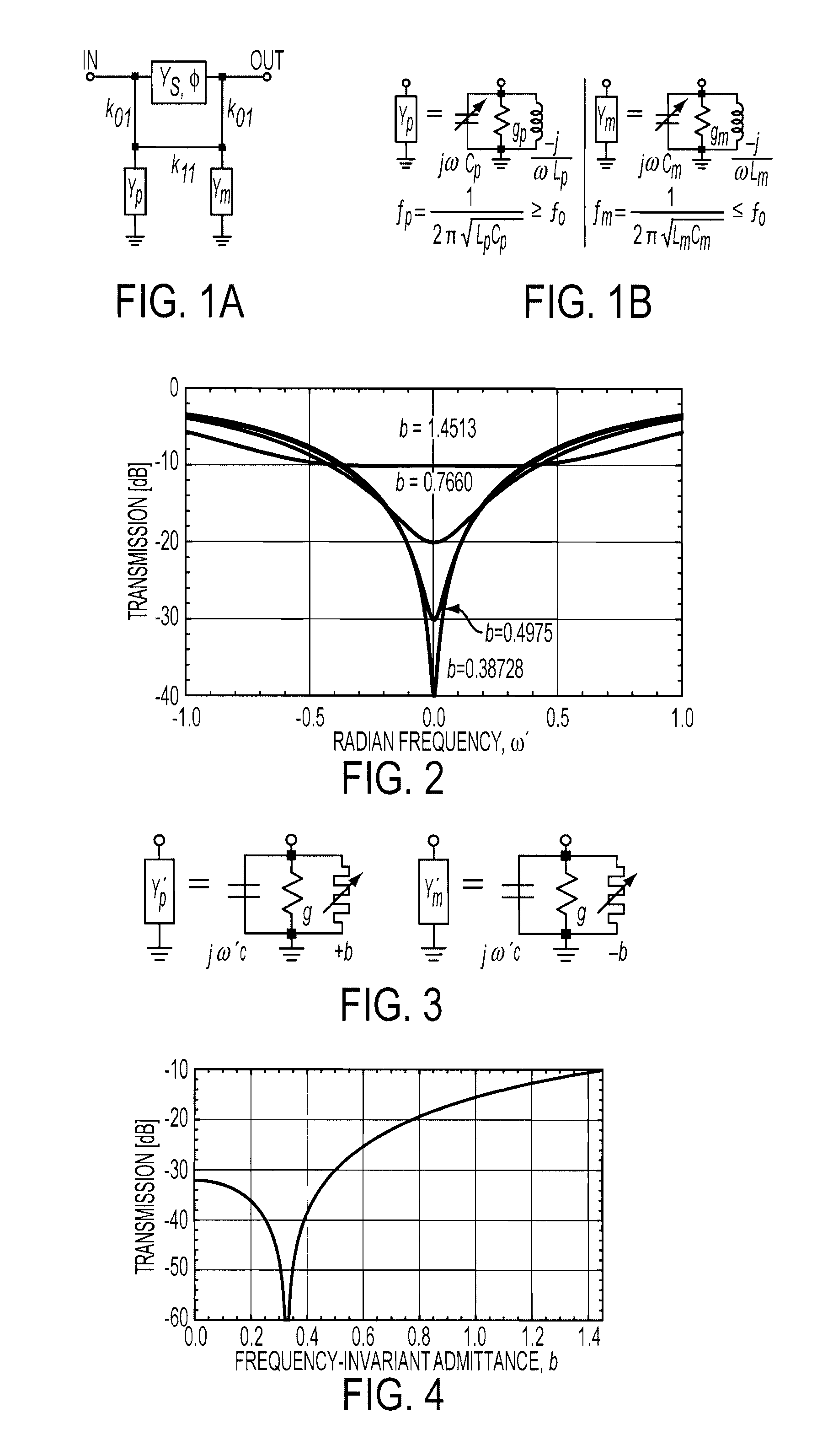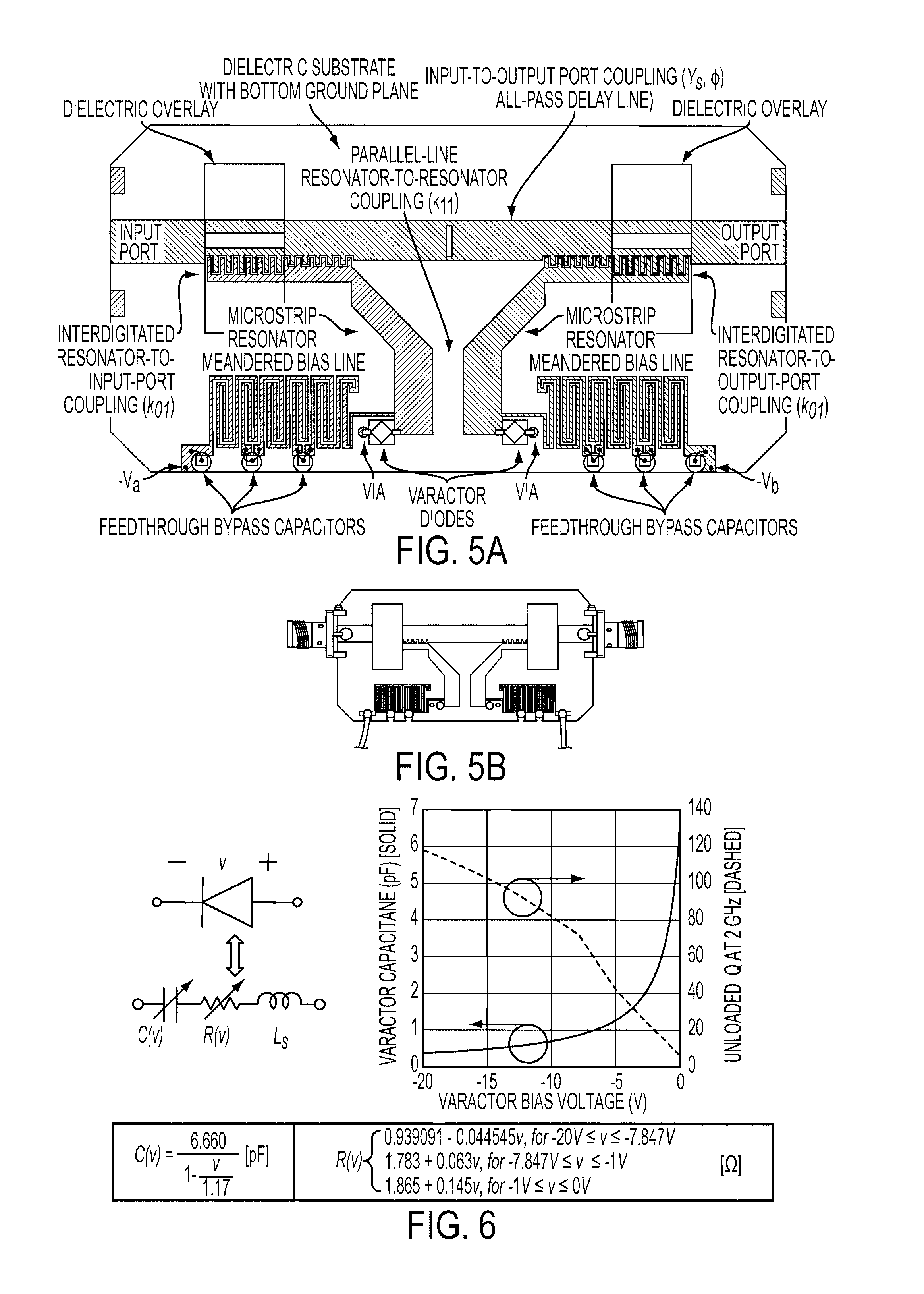Frequency-agile frequency-selective variable attenuator
a frequency-agile, variable technology, applied in the direction of electrical equipment, multiple-port networks, waveguides, etc., can solve the problems of affecting the reception of lower-level signals, affecting the performance of receivers, and raising the noise floor of receivers
- Summary
- Abstract
- Description
- Claims
- Application Information
AI Technical Summary
Benefits of technology
Problems solved by technology
Method used
Image
Examples
Embodiment Construction
[0021]The invention is directed to a method of tuning absorptive bandstop filters—such as those disclosed in U.S. Pat. No. 7,323.955. Douglas R. Jachowski, issued Jan. 29, 2008, and incorporated herein by reference—so as to realize a frequency-agile frequency-selective variable attenuator.
[0022]Conventional bandstop filters reflect stopband signals, and resonator loss tends to reduce and limit their stopband attenuation and band-edge selectivity. In Jachowski-2, a two-resonator bandstop filter topology, termed an “absorptive- pair”, is described that, at least to some extent, absorbs stopband signals—with resonator loss limiting minimum bandwidth rather than stopband attenuation. One of many possible electrically-equivalent circuit schematics of an absorptive pair bandstop filter is given in FIG. 1A, in which ideal (frequency invariant) admittance inverters k01 couple lossy lumped-element resonators, with admittances Yp and Ym, to the ends of a phase shift element of characteristic ...
PUM
 Login to View More
Login to View More Abstract
Description
Claims
Application Information
 Login to View More
Login to View More - R&D
- Intellectual Property
- Life Sciences
- Materials
- Tech Scout
- Unparalleled Data Quality
- Higher Quality Content
- 60% Fewer Hallucinations
Browse by: Latest US Patents, China's latest patents, Technical Efficacy Thesaurus, Application Domain, Technology Topic, Popular Technical Reports.
© 2025 PatSnap. All rights reserved.Legal|Privacy policy|Modern Slavery Act Transparency Statement|Sitemap|About US| Contact US: help@patsnap.com



